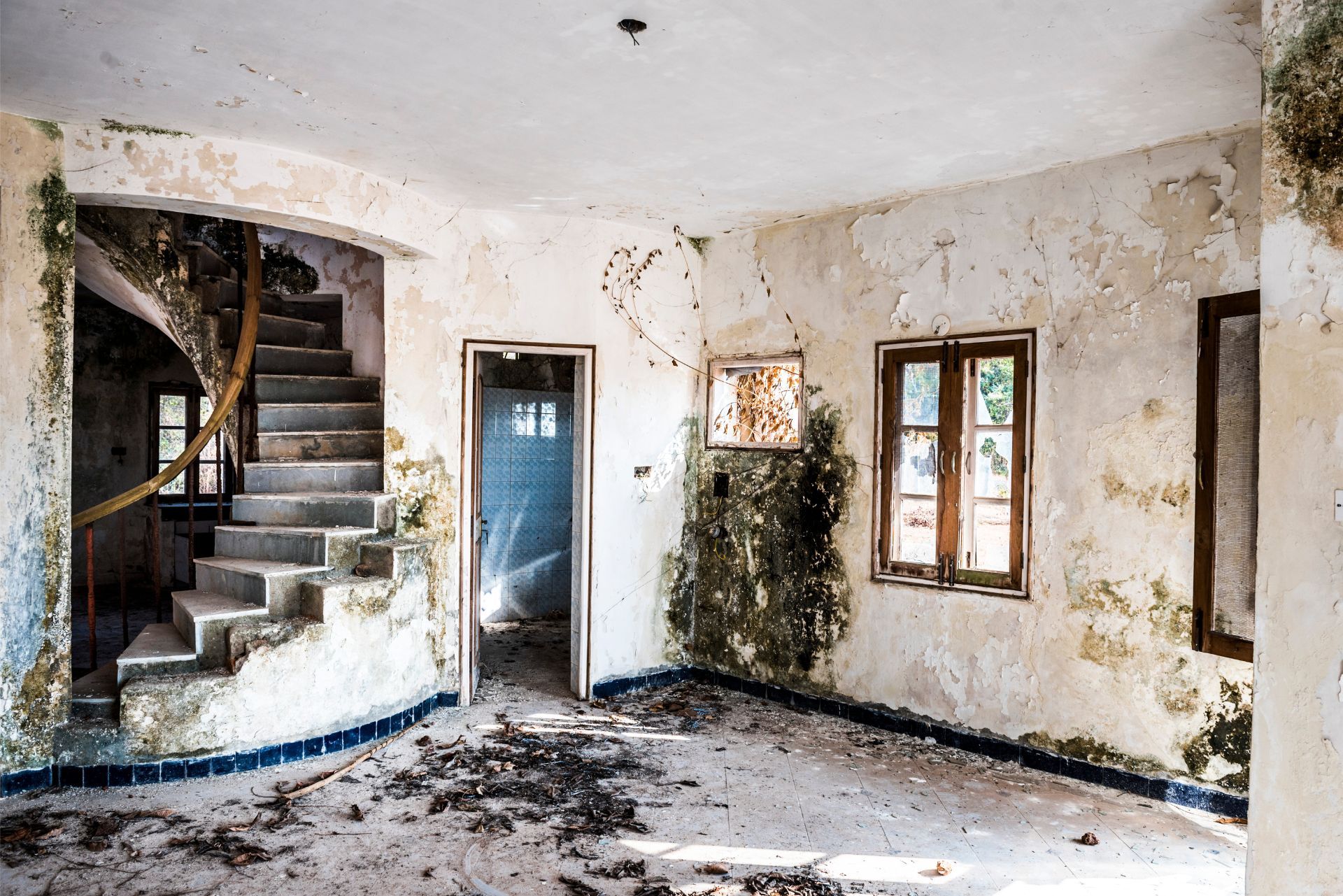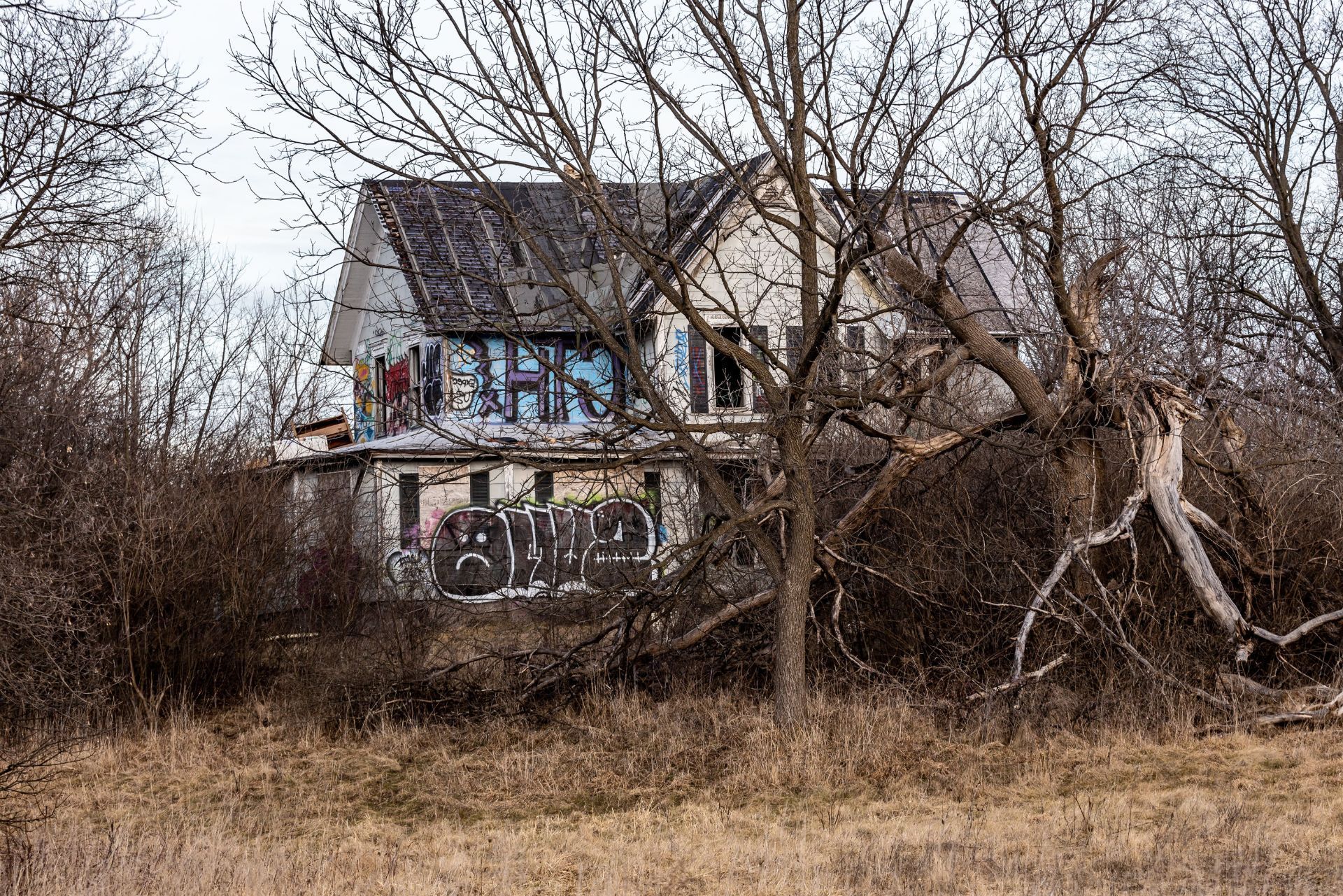Top 3 Recommended Policies

By: David Graves
Licensed Personal Insurance Specialist
425-320-4280
A house that sits empty for weeks or months in Washington State faces very different risks than a home that is occupied every night. Broken water lines go undiscovered, squatters can move in, vandals strike without warning, and storms batter roofs and siding while no one is around to intervene. Because of those heightened dangers, most standard homeowners policies either restrict or completely exclude coverage after a property has been vacant for a set number of days. That gap leaves thousands of Washington property owners financially exposed. Vacant home insurance fills the void, but many owners do not realize the option exists, how it differs from typical coverage, or what it costs. The following guide breaks down every major point, from legal definitions and state-specific hazards to premium ranges, underwriting secrets, and smart ways to reduce risk. By the end, readers will understand how to protect an empty residence with confidence.
Why Vacant Home Coverage Matters More Than Ever
The Pacific Northwest real-estate market has seen a surge in “in-transition” properties. Data from the U.S. Census Bureau show that roughly 9.3 percent of Washington’s housing units were categorized as vacant in 2023, up from 7.8 percent a decade earlier. Some of those homes belong to owners waiting for permits, renovations, or a post-pandemic relocation; others were inherited and are still working through probate. No matter the reason, insurers treat a dwelling very differently when no resident or caretaker is present, generally after 30 to 60 consecutive days. Loss statistics back up the cautious approach: the Insurance Information Institute reports that water-damage claims in vacant buildings cost an average of 42 percent more than in occupied ones because leaks often go unchecked for weeks.
Without a dedicated vacant-home endorsement or standalone policy, a single fire or burst pipe can wipe out years of equity. Mortgage lenders and condo associations increasingly require proof of specialized coverage when they learn that a property will be empty, and failure to comply can trigger costly “forced-placed” insurance at triple the normal premium. In short, the financial consequences of ignoring vacancy language are far larger than the price of buying the right protection in the first place.
Moreover, the risks associated with vacant homes extend beyond just physical damage. Vandalism and theft become more likely when a property is unoccupied, as opportunistic individuals may see an empty home as an easy target. Insurance claims related to vandalism can be particularly troublesome, as they often require extensive documentation and can lead to lengthy investigations, delaying any potential payouts. Additionally, the presence of unkempt yards or neglected exteriors can attract unwanted attention, further increasing the likelihood of damage or theft. This makes it crucial for homeowners to not only secure the right insurance but also to consider regular maintenance and monitoring of their vacant properties.
Furthermore, the emotional toll of managing a vacant property can be significant. Owners may feel a sense of anxiety or helplessness, worrying about the potential for damage or loss. This stress can be compounded by the complexities of the real estate market, where fluctuating values can impact the decision to sell, rent, or hold onto a property. Engaging property management services or local caretakers can provide peace of mind, ensuring that the home is regularly checked and maintained. Such proactive measures can help mitigate risks and protect the owner's investment, making the case for vacant home coverage even more compelling in today's dynamic housing landscape.

Vacant Versus Unoccupied: A Critical Legal Distinction
Washington insurers use two separate classifications—vacant and unoccupied—and each triggers a different response in the event of a claim. An unoccupied home still contains the owner’s furniture, appliances, and personal property; utilities remain on, and the owner intends to return, even if that is not for several weeks. By contrast, a vacant home is devoid of most furnishings, has minimal utilities running, and often shows other signs of abandonment. Courts have repeatedly upheld these definitions, and adjusters rely on them when deciding whether a loss is covered.
The difference might sound technical, yet it can decide the fate of a six-figure claim. Suppose a Seattle-area homeowner leaves for an extended business assignment in Europe and keeps the house furnished, with neighbors checking in. Many insurance contracts allow up to 60 consecutive unoccupied days before coverage limits change. On the other hand, an investor who guts a Tacoma property and leaves it empty while awaiting permits is considered vacant almost immediately, and standard coverage might terminate after just 30 days. Knowing which category applies helps owners buy the appropriate endorsement and avoid unpleasant surprises later.
Understanding these distinctions is crucial for homeowners and investors alike, as the implications extend beyond mere definitions. For instance, if a homeowner's unoccupied property suffers water damage due to a burst pipe while they are away, their insurance may cover the repairs if the property is classified as unoccupied. Conversely, if the same property were deemed vacant, the insurer might deny the claim altogether, leaving the homeowner to shoulder the financial burden. This reality underscores the importance of keeping detailed records of occupancy status, including dates of absence and any communications with neighbors or property managers.
Moreover, the legal ramifications can vary significantly between different states and insurance policies. Some insurers may offer additional endorsements or riders that can extend coverage for vacant properties, but these often come with higher premiums. Homeowners must weigh the costs against potential risks, especially in areas prone to natural disasters or vandalism. In addition, understanding local laws and regulations regarding property maintenance during periods of vacancy can further protect owners from unexpected liabilities and ensure compliance with municipal codes. This proactive approach not only safeguards financial interests but also promotes responsible property stewardship in the community.
Unique Risks in Washington’s Climate and Regulatory Landscape
From the snow-laden slopes of Stevens Pass to the salt-sprayed shores of Puget Sound, Washington homes endure intense weather swings. Winter freezes routinely burst supply lines in unheated basements, and atmospheric-river rain events dump inches of water in a matter of hours. Vacant structures are especially vulnerable because no one is there to tweak the thermostat, clear clogged gutters, or spot foundation seepage. The Washington State Office of the Insurance Commissioner notes that water and mold claims spike by nearly 30 percent during winters following especially cold Novembers, when many seasonal residents have already departed.
Wildfire danger is another growing concern. Between 2016 and 2022, the Department of Natural Resources recorded more than 4,200 wildfires across the state, with several igniting in the traditionally damp western counties. Wind-blown embers can travel a mile or more, and an unoccupied property without defensible space becomes an easy target. Insurers therefore scrutinize brush clearance, roof material, and distance to the nearest fire station when rating a vacant-home policy. The increasing frequency of these fires has prompted local governments to implement stricter regulations on vegetation management and fire safety, urging homeowners to create defensible spaces around their properties. This not only protects their homes but also contributes to community resilience against the encroaching threat of wildfires.
Last, Washington’s strong tenant-protection statutes inadvertently complicate vacancy. Squatters who take up residence for even a short time can trigger lengthy eviction procedures. Insurers have documented upticks in vandalism, theft of copper piping, and illegal grow operations inside empty houses. Because liability for injuries to trespassers can still fall on the owner, vacant-home policies often include higher premises-liability limits than a standard homeowners contract. Additionally, the state’s evolving housing policies, aimed at addressing homelessness and affordable housing shortages, have led to increased scrutiny of vacant homes, making it imperative for property owners to stay vigilant. Regular inspections and maintenance not only deter potential squatters but also help in identifying any issues that could escalate into more significant problems, ensuring that properties remain secure and protected against both human and environmental threats.
What Standard Homeowners Policies Exclude
Most Washington homeowners policies contain a vacancy clause that reduces or eliminates coverage after a predetermined period—commonly 30 or 60 consecutive days. At that point, fire, vandalism, glass breakage, and water damage may be excluded entirely, even if premiums are paid in full. Some carriers switch from “all-risk” to named-peril protection, covering only losses specifically listed in the contract, such as lightning or aircraft impact. The shift is buried in fine print, so policyholders often discover the limitation only after filing a claim.
Another overlooked issue is liability. If a trespasser is injured on vacant premises and sues, the insurer may refuse defense if the vacancy violates policy conditions. Likewise, medical-payments coverage, normally granted without establishing fault, can lapse. Owners relying on umbrella liability protection must still maintain primary coverage to activate the excess layer; otherwise, the umbrella may not respond. Understanding these cascading exclusions underscores why a separate vacant-home form is essential.
Additionally, many homeowners may not realize that personal property coverage can also be affected by vacancy. Items left in an unoccupied home, such as furniture, electronics, or valuable collectibles, may not be covered under standard homeowners policies after the vacancy period expires. This can lead to significant financial loss if theft or damage occurs. Homeowners should consider conducting a thorough inventory of their possessions and consult their insurance agent to ensure that valuable items are adequately insured, especially if they plan to leave their home unoccupied for an extended period.
Furthermore, the implications of a vacancy clause extend beyond immediate financial concerns. The maintenance of the property itself can become a liability issue. For instance, if a vacant home falls into disrepair, it may attract vandalism or squatters, leading to further complications. Regular inspections and maintenance can help mitigate these risks, but homeowners must be aware that failing to uphold these responsibilities could lead to even more exclusions or complications with their insurance claims. Therefore, proactive management of a vacant property is not just a good practice; it is a crucial aspect of protecting one's investment and ensuring compliance with insurance requirements.
Key Features Found in Washington Vacant Home Insurance Policies
Specialized vacant-dwelling contracts restore many of the protections lost under a standard homeowners plan. While each carrier differs, the most common features include:
- Comprehensive property coverage: Fire, smoke, lightning, explosion, windstorm, hail, riot, aircraft, and vehicle impact are typically included. Many policies also add vandalism and malicious mischief, perils nearly always excluded once a dwelling is declared vacant under a traditional plan.
- Water-damage options: Some insurers offer limited coverage for sudden plumbing leaks if the water supply is shut off and the system winterized; others require active heat and monthly inspections. Review the endorsement language carefully.
- Premises liability: Limits usually start at $100,000, with $300,000 or $500,000 available for a modest premium increase. The higher limits recognize that owner monitoring is reduced, and unknown visitors may enter the property.
Additional endorsements can tailor protection further. Builders-risk coverage appeals to investors performing major renovations, while ordinance-or-law riders cover the extra cost of bringing an older building up to current codes after a covered loss. Some carriers also attach infestation clauses to pay for the removal of raccoons, bats, or rats—an increasingly common problem in the evergreen state.
How Much Does Vacant Home Insurance Cost in Washington?
Premiums vary widely, yet a few core factors drive pricing. Construction type, location, prior claims, and the length of vacancy have the largest impact. A newer, fire-resistant stucco home in suburban Bellevue might run as little as $55 a month for basic coverage, whereas an older wood-frame farmhouse in rural Chelan County could cost $160 or more. The policy term also matters: six-month contracts generally have higher per-day rates but let owners cancel with pro-rated refunds once the home is occupied or sold. Twelve-month terms offer better value if the vacancy will be prolonged.
Deductible choice delivers straightforward savings. Moving from a $1,000 to a $2,500 deductible can shave 8 to 12 percent off the premium, according to a 2023 survey of three leading surplus-line carriers writing in Washington. Liability limits make a smaller difference, adding roughly $15 a year to jump from $100,000 to $500,000 on most policies. The biggest surprise for many owners is inspection frequency: carriers that require monthly documented walk-throughs often reward compliance with 10 to 15 percent discounts because early detection cuts loss severity.
Finally, expect surplus-lines taxes and stamping fees on many vacant-dwelling contracts. Because the admitted market offers limited options, coverage often comes from non-admitted insurers. Washington levies a 2 percent premium tax plus a stamping fee of 0.3 percent, charges that surface as line items on the declarations page. While unavoidable, they are small compared with the alternative of uninsured losses.
Seven Practical Ways to Reduce Risk and Lower Premiums
1. Maintain climate control: Keeping the interior temperature above 55 °F in winter prevents frozen pipes, and insurers look favorably on programmable smart thermostats that alert owners to sudden drops.
2. Install monitored security: An alarm system that reports break-ins, fires, and water leaks to a central station is one of the few upgrades that can earn double-digit discounts in the vacant-home market.
3. Shut off and drain water lines: Where heat cannot be guaranteed, shutting the main supply and draining pipes reduces both claim frequency and premium.
4. Schedule regular inspections: Documented visits every 7 to 30 days satisfy many policy conditions. Some owners hire professional property-check services that provide date-stamped photos for insurer records.
5. Clear vegetation and debris: Creating a defensible space of at least 30 feet around the structure lowers wildfire exposure, and some carriers require proof of compliance before binding.
6. Update locks and secure windows: Reinforced deadbolts, window pins, and anti-lift devices deter intruders and are inexpensive to install.
7. Communicate with neighbors: A trusted neighbor who agrees to report suspicious activity functions as an unpaid security guard. Insurers cannot rate this intangible assistance, but anecdotal evidence shows it reduces vandalism claims considerably.

How to Shop and Compare Washington Providers Effectively
Start by contacting an independent insurance broker licensed in Washington who works with both admitted and surplus-line carriers. Independent brokers have access to more than a dozen specialty markets, whereas captive agents typically represent a single company that may not even offer vacant-dwelling forms. Provide complete details: construction type, square footage, prior renovations, security measures, planned vacancy length, and any past claims. Transparent information speeds up underwriting and prevents last-minute cancellations.
When quotes arrive, read beyond the premium column. Confirm the policy is specifically labeled “vacant dwelling” or includes a vacancy endorsement, note whether coverage is named peril or special form, check exclusionary endorsements for water damage, theft, and liability sublimits, and verify cancellation terms if the home sells sooner than expected. Finally, review the financial strength of any non-admitted insurer through A.M. Best or Demotech. A bargain rate is meaningless if the company cannot pay when disaster strikes.

